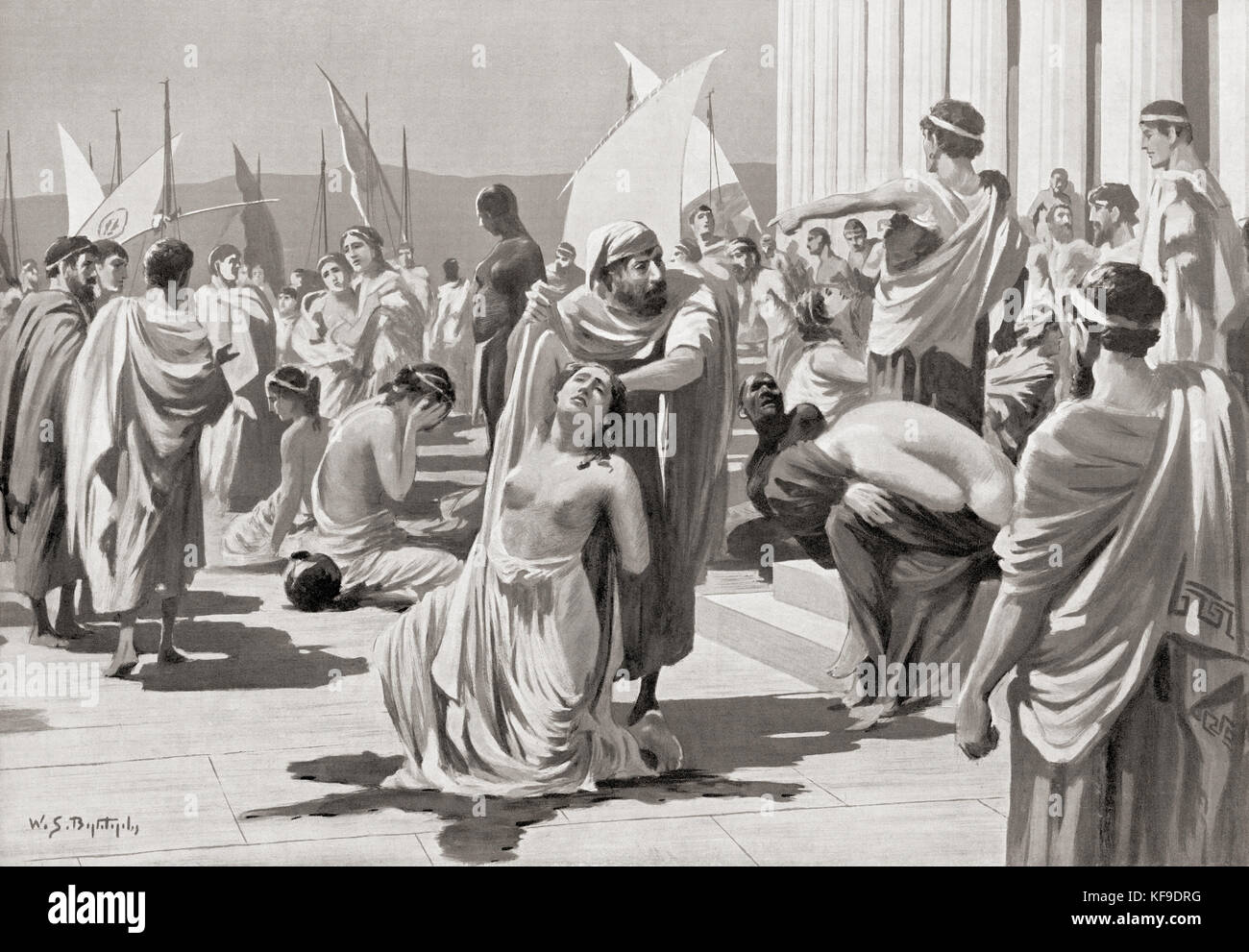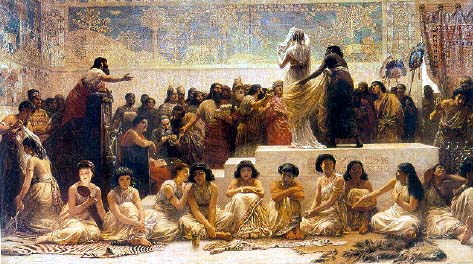

Whilst ideas of ethnic inferiority were indispensable in the transatlantic trade, they were inessential in Roman slavery. However, this would miss a crucial point. Some might see this as evidence that racism and slavery are indeed inseparable consequently concluding that Roman slavery was, in fact, not dissimilar to the transatlantic trade. Black, Syrian and Jewish people are examples of groups who were heavily associated with slavery in Roman culture, and all enslaved people were often characterised as foreign and barbaric (Bradley 1988, 481).įigure 2: 2nd-1st century BC Statue of an African enslaved person. It is important to state, however, that this does not mean racism was absent from Roman slavery.
#Ancient roman slave market free
Whilst enslaved people in the Roman period were, as in the transatlantic slave trade, viewed as socially and economically inferior to free citizens, they were not necessarily viewed as racially inferior (Watson 1987, 3). Roman society had differing moral justifications of slavery from those of the transatlantic trade. The type of segregation produced by the transatlantic trade did not therefore exist (Bradley 1988, 478). Many Romans owned people of the same race as themselves (Bradley 1988, 477-478).įigure 1: A master beating an enslaved person who appears to be of the same race. In contrast to the transatlantic trade, there was a notable lack of racial distinction between enslaved person and master. Enslaved people could have come from as far as Britannia or the Balkans, or as near as the city of Rome itself (Bradley 1988, 478). What one can say for certain is that the range of ethnic backgrounds evident in Roman life was reflected in slavery. Slavery, rather than being restricted to the owning and trading of people along racial lines, should be seen as a much wider concept.įirstly, it should be said that providing an accurate breakdown of the diversity of Rome’s enslaved peoples is difficult. To understand slavery in other historical contexts, including the Roman period, it is necessary to challenge this assumption. Consequently, the word “slavery” has become deeply associated with racism and beliefs of white supremacy. In Western discourse, the transatlantic slave trade is unavoidable when discussing slavery in both modern and ancient history (Alston 2011, 1). The post-abolition world, however, almost unanimously views the practice as morally wrong. Slavery, for many civilisations throughout human history, has been an inescapable fact. Here, I seek to highlight these common misconceptions and bring the true nature of slavery in Ancient Rome to the fore. There is, however, a disconnect between the general reader’s interpretation of Roman slavery and its known realities.

Consequently, the topic of slavery in the Roman Empire has been one of interest to modern Roman historians. Enslaving people, owning and trading them, was integral to Rome’s economy as well as its social structure and thus it can undoubtedly be described as a “slave society”. In addition to the murder and forced subjugation of a countless number of people, one of Rome’s greatest crimes against humanity was the widespread practice of slavery.

A predilection for violence is visible all the way from Rome’s distant origins up to its eventual demise ( Livy.1.7 ). That the city was reportedly founded on the fratricide of Remus by his brother Romulus is revealing. Like all of history’s great empires, the existence of the Roman Empire, and all its grandeur and dominance came at a great humanitarian cost. student in Ancient History at the University of Kent. This month’s post has been written by Harrison Kavanagh, a M.A.


 0 kommentar(er)
0 kommentar(er)
